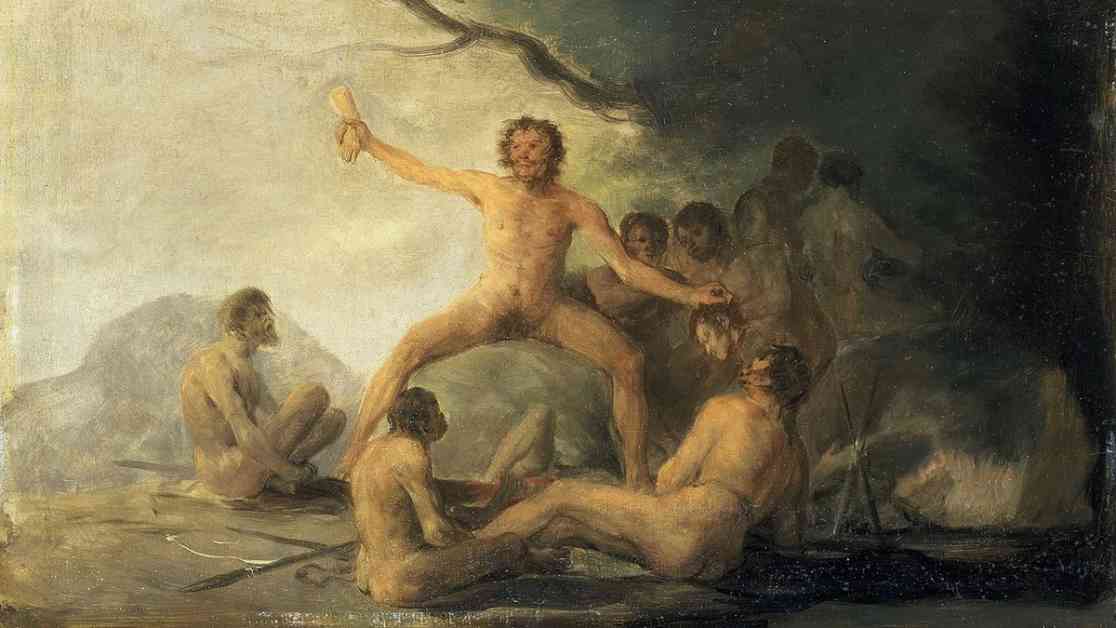The Evolution of Cannibalism: From Pagan Rite to Christian Medicine
In the annals of Western Europe’s history, a dark and taboo practice has long lingered in the shadows: cannibalism. Often depicted as a savage and barbaric custom, the act of consuming human flesh has a complex and multifaceted history that spans centuries. Recent research sheds new light on the role of cannibalism in Western Europe, revealing a fascinating tapestry of nutritional, religious, and medicinal purposes that have shaped the region’s cultural landscape.
Ancient Origins and Medieval Taboos
The roots of cannibalism in Western Europe can be traced back to prehistoric times, where the consumption of human body parts served various needs. From nutritional requirements to religious rituals and healing practices, the act of ingesting human flesh was not uncommon in ancient European societies. In the Middle Ages, references to cannibalism emerge in times of famine, war, and social upheaval, highlighting the desperate measures taken by communities to survive.
One of the earliest prohibitions against cannibalism can be found in the Codex Theodosianus and the Visigothic Code, which strictly forbade the desecration of graves and the extraction of remedies derived from human bodies. These laws, dating back to Roman antiquity, reflect a societal aversion to viewing human remains as sources of healing substances. Despite these prohibitions, the practice of cannibalism persisted, leading to the proliferation of laws aimed at regulating and punishing such acts.
Christian Influence and Penitentials
With the rise of Christianity came a new set of regulations in the form of penitentials, books outlining sins and their corresponding penances. These early medieval texts sought to govern societal behavior, including the consumption of blood and flesh. Prohibitions against drinking blood or urine, as well as eating animals that had fed on human flesh, were established to enforce moral and religious boundaries.
The penitentials of figures like Theodore of Tarsus, Archbishop of Canterbury, further reinforced the taboo surrounding ingesting bodily fluids for medicinal purposes. Women, in particular, were targeted for consuming blood or semen as curative agents, highlighting the gendered nature of these prohibitions. The strict regulations surrounding cannibalistic practices underscored a broader cultural shift towards viewing the human body as sacred and inviolable.
Religious Cannibalism and Sacred Rituals
The intersection of Christianity and cannibalism gave rise to a complex interplay of beliefs and practices. The ambiguity of Christian rituals led to misunderstandings and accusations of cannibalism against practitioners of the faith. Allegations of consuming human sacrifices in honor of God were leveled against Christians, Jews, and other religious groups, reflecting a deep-seated fear of ritualistic violence.
As the veneration of saints grew in prominence, their bodies became objects of healing and reverence. The ingestion of products that had come into contact with the saint or their relics was permitted as a form of spiritual communion. Oils, water, and even dust from holy burial sites were consumed to harness the healing powers of these sacred objects, marking a shift from consuming the dead to consuming the divine.
Legends and Lore: Emperor Constantine’s Bath of Blood
One of the most enduring legends surrounding cannibalism is the tale of Pope Saint Sylvester I and Emperor Constantine’s miraculous cure. In this story, Constantine, afflicted with leprosy, is advised to bathe in the blood of sacrificed children to heal his ailment. However, through the intervention of Saint Sylvester and the children’s mothers, Constantine is baptized and miraculously cured of his leprosy.
This legend, which spread across Europe through oral traditions and artistic depictions, served to contrast pagan beliefs with Christian virtues. The narrative portrays pagan rituals as cruel and barbaric, emphasizing the redemptive power of Christian faith. Through stories like these, medieval Europeans sought to distance themselves from the perceived savagery of their pagan ancestors.
Modern Echoes and Romanticism
Even in the 19th century, remnants of cannibalistic beliefs persisted in European culture. Dictionaries of materials referenced the curative properties of human body parts, linking them to the romantic literature of the era. Vampires, werewolves, and other supernatural creatures hungry for flesh and blood perpetuated the fascination with cannibalistic themes in popular culture.
The legacy of cannibalism in Western Europe is a testament to the enduring power of cultural taboos and religious beliefs. From ancient rituals to medieval penitentials, the evolution of cannibalism reflects a complex interweaving of social norms, spiritual practices, and historical narratives. By exploring the depths of this macabre tradition, we gain insight into the human psyche and the boundaries we construct to define our humanity.
This revised article, based on recent research and historical analysis, illuminates the nuanced history of cannibalism in Western Europe. Through a lens of cultural evolution and religious transformation, we glimpse the intricate tapestry of beliefs and practices that have shaped our understanding of this ancient taboo. As we navigate the shadows of our collective past, we are reminded of the fragility and resilience of human civilization in the face of darkness and light alike.










